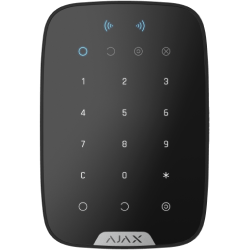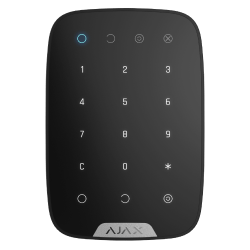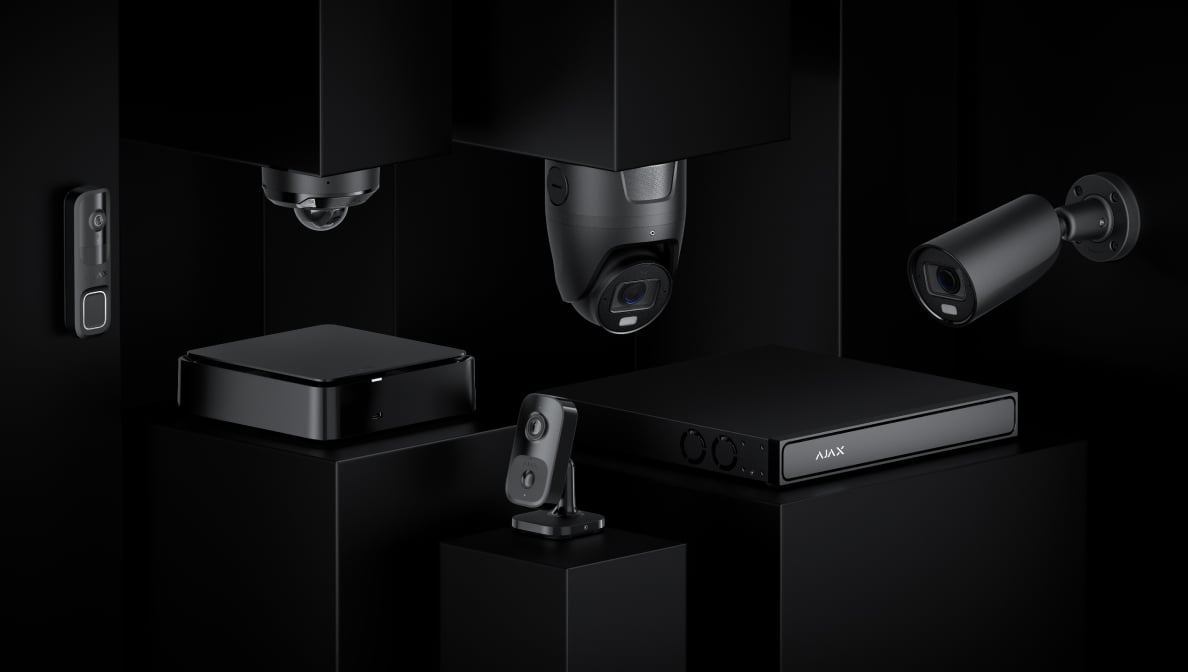
Ajax SpaceControl Jeweller
A key fob for controlling security modes. Features a panic button for sending alarms to your inner circle and a security company in case of trouble.
Principle of operation
The device controls the security modes and sends an alarm signal to the Central Monitoring Station by pressing the key fob panic button.
Features
Authentication prevents forgery of the device and false alarm signals.
Authentication to prevent forgery
Jamming detection and communication channels encryption
Two-way communication
Calls for help in case of emergency
Activates full or partial alarm modes

Indicates command execution with color blink
Connecting and setting up
Ready to operate straight out the box: the battery is already installed, therefore there is no need to disassemble the detector. With one click, it can be connected to the hub in the mobile application.
Pairing with the security system via QR code

Configuring and testing in mobile and desktop apps

Technical information
Ajax SpaceControl Jeweller
More Ajax security system control devices
Ajax product categories
In an Ajax system, you can combine devices of all product categories: Intrusion protection, Video surveillance, Fire and life safety, or Comfort and automation. Create the system to suit your needs and manage it in a single interface.
Panic button — security add-on
Suppose the decision has been made to install a burglar alarm on the premises. In that case, it is worth paying attention to comprehensive security systems that can prevent more than one type of threat and provide users with maximum protection. The full-fledged security systems also include a panic button — a device for quickly calling for help. Panic alarm buttons are installed in high-risk areas: bank cash desks, reception offices, shops, private premises, etc.Why is it essential to use the panic button in the burglar alarm system
The panic button is considered a mandatory device in a security system. When the button is pressed, the signal is transmitted to the security console and calls for help. In addition to the panic buttons, there is also a device for raising a fire alarm. This button is set to inform the alarm when a fire occurs. The device is to be mounted in places visible to employees and visitors — on the stairs, near the exit. Suppose a panic button is installed to notify about an intrusion or, for example, about an inadequate visitor in a store. In that case, they must be mounted in inconspicuous but easily accessible places. There are conventional panic buttons that can be installed anywhere. In the floor view, the installation is, respectively, floor. Autonomous panic buttons can be either fixed in one place or carried with, for example, to protect a large territory. Stand-alone alarm buttons can be used as a key fob. The location of the panic button depends on the specifics of the room. Most often, security devices of this type are used in shops, banks, currency exchange offices and private premises.Features of a panic button for burglar alarm
Panic buttons are often installed near doors in specially designated niches that are closed. Alarm buttons with this setting are used in combined fire and security systems. If the floor installation option is chosen, the panic button pedal is mounted under the table, and this option is invisible to others. Hidden panic buttons for signalling are used in jewellery stores, banks, pawnshops, and only for security. In addition to differences in the installation location, panic buttons are of the following types:- non-fixed or fixed panic button;
- protected housing or conventional device housing.
- Wired installation is considered traditional and involves laying power wires. Due to the complex installation, mounting such a panic button model is better before the repair.
- The wireless installation is more straightforward and allows users to transfer the device. The alarm button can be fixed in one place or used as a key fob.










